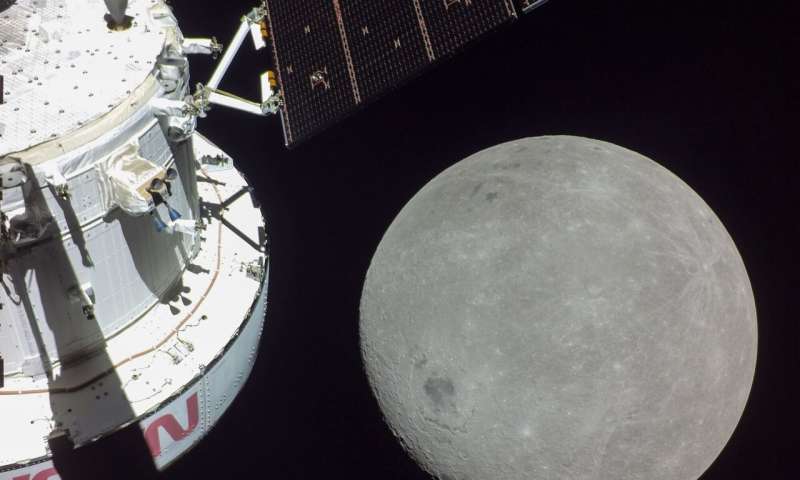What happened to those CubeSats that were launched with Artemis I?

NASA made history on November 16 when the Artemis I mission took off from Launch Complex 39B at Cape Canaveral, Florida, on its way to the moon. This uncrewed mission is testing the capabilities of the Space Launch System (SLS) and Orion spacecraft in preparation for the long-awaited return to the moon in 2025 (the Artemis III mission). Rather than astronauts, this mission carries a group of mannequins with sensors and has a primary payload consisting of the Callisto technology demonstrator (a human-machine video interface system).
As a secondary payload, Artemis I also brought ten 6U CubeSats beyond Low Earth Orbit (LEO), three of which were NASA missions designed to perform experiments. The rest were built by partner space agencies, commercial space entities, research institutes, and universities to carry out a variety of unique deep-space science experiments. While all these satellites managed to deploy successfully, six have not made contact with controllers on the ground or have since experienced problems, and their whereabouts remain unknown.
The three NASA missions include the BioSentinel, which was designed, built, and tested by engineers at NASA's Ames and will measure the effects of deep-space radiation on DNA using yeast organisms. The second is the Lunar Flashflight, a technology demonstrator developed at the NASA Jet Propulsion Laboratory (JPL) with support from the Marshall Space Flight Center (MSFC), the Goddard Space Flight Center, and the Georgia Institute of Technology. Its purpose is to look for surface water ice in the permanently-shadowed regions near the lunar south pole and test out new spacecraft technologies.
The third is the NEA Scout mission developed by the NASA Marshal Space Flight Center in partnership with NASA JPL, with support from NASA Goddard, the Johnson Space Center, and the Langley Research Center. The purpose of the mission is twofold: one, to demonstrate solar sail deployment; and two, to demonstrate solar sail navigation by rendezvousing (and characterizing) the near-earth asteroid (NEA) 2020 GE. The other missions include the following:
- ArgoMoon: Contributed by the European Space Agency (ESA) and ArgoTec, an Italian aerospace company. This CubeSat aims to observe the SLS interim cryogenic propulsion stage with advanced optics and software imaging systems.
- CuSP: Contributed by the Southwest Research Institute (SwRI), this satellite is a "space weather" mission that will measure solar particles and magnetic fields.
- EQUULEUS: This satellite was developed by the Japan Aerospace Exploration Agency (JAXA) and the University of Tokyo to image Earth's plasmasphere and study Earth's radiation environment from the Earth-Moon L2 point.
- Lunar IceCube: Developed by Morehead State University, this CubeSat will search for lunar water and other volatiles using an infrared spectrometer.
- LunaH-Map: This satellite, contributed by Arizona State University, will use neutron spectrometers to create higher-fidelity maps of near-surface hydrogen in permanently-shadowed craters and other regions near the lunar South Pole.
- LunIR: Developed by Lockheed Martin, this mission will conduct advanced infrared imaging of the lunar surface.
- OMOTENASHI: Developed by JAXA, this lunar lander (the smallest ever deployed) will study the lunar environment.
- Team Miles: Developed by Florida-based aerospace company Miles Space, this demonstrator will test plasma thrusters and compete in NASA's Deep Space Derby Centennial Challenge (formerly the Cube Quest Challenge).
All ten CubeSats successfully deployed from the Interim Cryogenic Propulsion Stage (ICPS), an adapter attached to the SLS's upper stage. On November 18th, NASA officials confirmed that ArgoMoon, Biosentinel, Equuleus, LunaH-Map, and OMOTENASHI were all operational, though OMOTENASHI began experiencing problems since then. On November 24th, NASA reported that the NEA Scout mission still hadn't made contact. This prompted the mission controllers to deploy the CubeSat's sail ahead of schedule, hoping it will be visible to ground-based telescopes.
In short, only four of the deployed satellites successfully established communications with their controllers back on Earth. The teams behind the remaining six missions are currently troubleshooting various solutions and are waiting to learn more. But as time has taught us, such is the nature of CubeSat missions, which are inherently high-risk and high-reward. And it may be premature at this point to count out all the missions that have experienced problems.
Provided by Universe Today





















